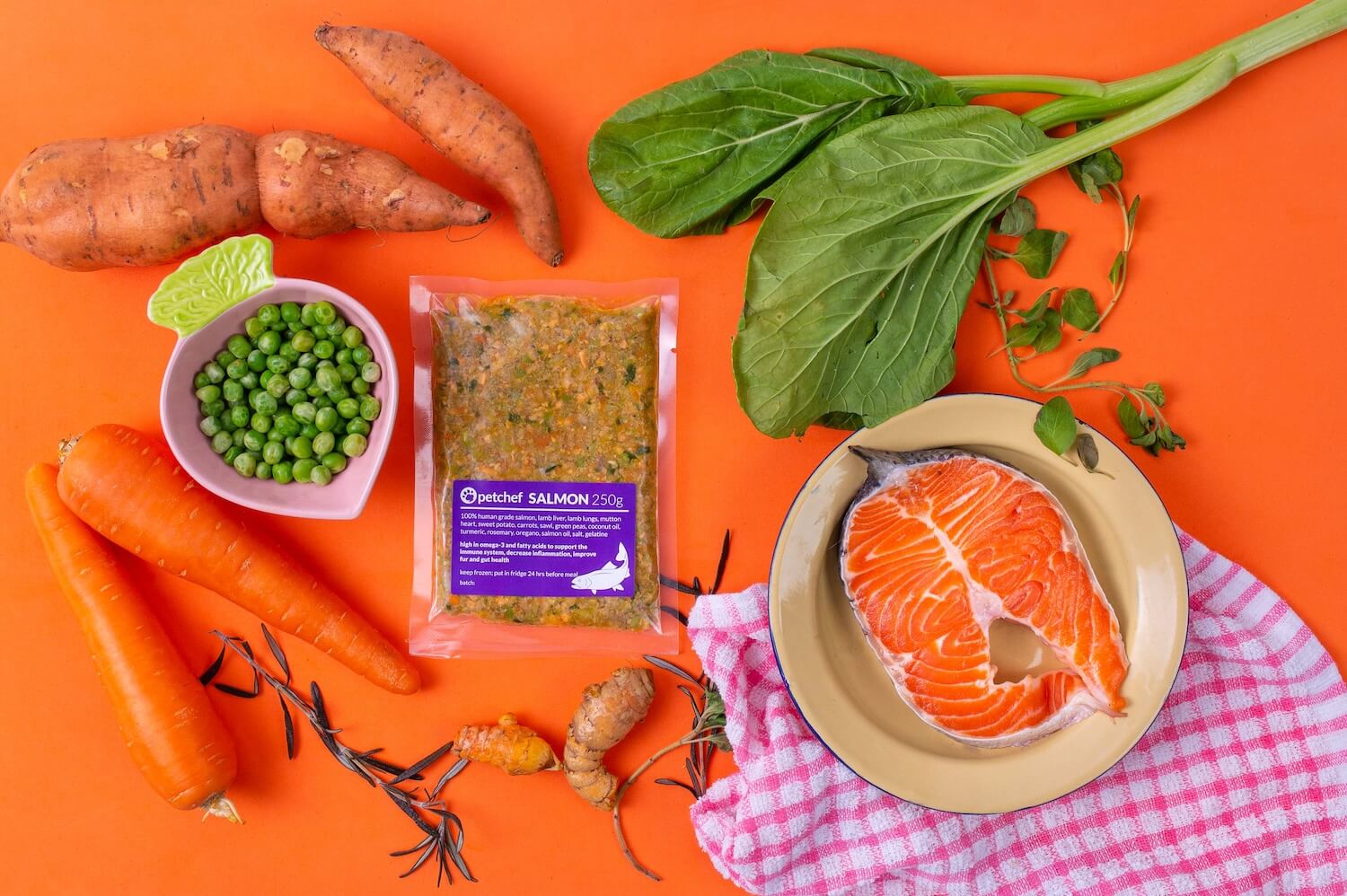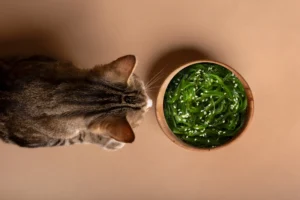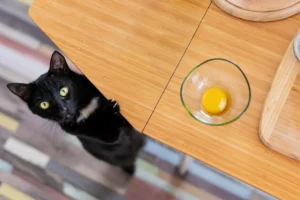Disclaimer: Always check with your vet on what “human foods” your dog can and cannot eat as information may vary based on their dietary needs and health conditions.
As dog parents, we’re no stranger having puppy eyes staring up at us as we’re cutting fresh produce while preparing our meals. Perhaps attracted by the bright red color of the flesh or its smell, our dogs may express curiosity towards wanting to try a tomato or two. While this fruit can be dog-safe, there are also some parts of the tomato that should not be fed to dogs.
Read on to learn more on whether digs can eat tomatoes, the potential benefits, and how much is just right—because when it comes to our furry friends, a little caution goes a long way!
Table of Contents
Are tomatoes good for dogs?
Yes, ripe tomatoes can be good for dogs in moderation! They contain vitamins and antioxidants that offer some health benefits, but they should only be an occasional treat.
Here’s why they could be a good snack for dogs:
Rich in vitamins A, C, and K
Supports immune health, vision, and blood clotting.
High in fiber
Aids digestion and promotes gut health.
Packed with antioxidants (like lycopene)
Helps reduce inflammation and may support heart health.
Low in calories
A good option for dogs needing a light snack.
Always remember to keep the portions small when feeding a new fruit and vegetable to your pet! This will allow you to detect if they’re allergic to it and avoid an emergency visit to the vet.
Are tomatoes bad for dogs?
Tomatoes are not inherently bad for dogs, but they can be dangerous as:
- Green tomatoes, stems, and leaves: these contain solanine and tomatine, which can be toxic in large amounts.
- Large amounts: can lead to stomach upset, diarrhea, or acid reflux.
- Tomato-based sauces or processed products: Often contain harmful ingredients like salt, sugar, garlic, and onions.
Which is why at Petchef, we ensure that all the ingredients that go into our dog food recipes are made of fresh, clean ingredients only! All the meals tailored for dogs contain:
50%+ meat (chicken, buffalo, beef, salmon, tuna, duck, etc)
45%+ vegetables and broth for additional nutrients
3.5% herbs and oils
It’s completely free of preservatives, additives, fillers and grains! If you’d love for your dog to eat the food they were born to eat, come have a chat with our friendly pet nutritionist to find the ideal meal for your pet
Ripe, red tomatoes in small amounts are generally safe and even offer some health benefits. But if your dog has a sensitive stomach or allergies, it’s best to avoid them.
If your dog accidentally eats a large amount of tomato plant material or green tomatoes, monitor for symptoms and contact your vet if needed.
How much tomato can a dog eat?
The right amount of tomatoes depends on your dog’s size, but in general, it should be an occasional treat rather than a regular part of their diet.
Here’s a small guideline:
- Small dogs: 1-2 small bite-sized pieces
- Medium dogs: around a tablespoon of a few small chunks
- Large dogs: a few more pieces than a tablespoon
Too much tomatoes can lead to an upset stomach due to its fiber and natural sugars, so moderation is key! Keep it to no more than 10% of your dog’s daily caloric intake to avoid overfeeding or digestive upset.
How to tell when a dog has had too much tomato?
If a dog eats too many tomatoes, they may show signs of digestive upset or, in rare cases, toxicity. Here’s what to watch for:
- Diarrhea or loose stools: too much fiber can upset their stomach.
- Acid reflux: signs include licking lips or swallowing frequently
- Bloating or gas: excessive fruit or fiber can cause bloating or gas, which might make your dog uncomfortable.
- Lethargy or discomfort: overeating dragon fruit might cause your dog to have a sugar spike followed by an energy crash; doggo may feel sluggish, restless, or just generally off, as their digestive system works overtime.
- Increased thirst or frequent urination: due to the natural sugar content.
Some serious symptoms caused by eating green tomatoes, stems of leaves include weakness or lethargy, loss of coordination, tremors or muscle twitching and dilated pupils.
If your dog shows any of these signs, stop feeding them tomatoes or treats and contact your veterinarian if symptoms persist or worsen. Mild cases usually pass within a day, but always provide fresh water to help flush out excess sugar and fiber.
For suspected tomato poisoning, seek vet help immediately – especially if they’ve eaten the green parts of the plant!
How often can dogs eat tomato
Dogs can eat tomatoes occasionally, but they shouldn’t be a regular part of their diet. A few small pieces of ripe, red tomato once or twice a week is generally safe for most dogs.
Here’s a general guideline by dog size:
Small dogs (under 10kg)
Once a week (1-2 bite-sized pieces)
Medium dogs (10-25kg)
1-2 times a week (1 tablespoon)
Large dogs (25kg and above)
1-2 times a week (a few more pieces)
As with any treat, moderation is key. Tomatoes should make up no more than 10% of your dog’s daily caloric intake. As with any treat, moderation is key to prevent digestive upset or weight gain. If your dog enjoys tomatoes and handles it well, you can offer it occasionally as a healthy treat!
How to feed your dog tomatoes
If you want to give your dog a tomato treat, follow these steps to make sure it’s safe and healthy!
- Choose a red, ripe tomato: avoid green tomatoes, stems, and leaves as they contain solanine and to atone, which can be toxic to dogs.
- Wash it thoroughly: remove any dirt or pesticides before cutting.
- Remove stems, leaves: the parts contain higher levels of tomatine.
- Cut into small, bite-sized pieces: makes it easier to digest and reduces choking risk.
- Serve in moderation: follow portion guidelines based on your dog’s size.
Easy ways to serve tomatoes to your dog
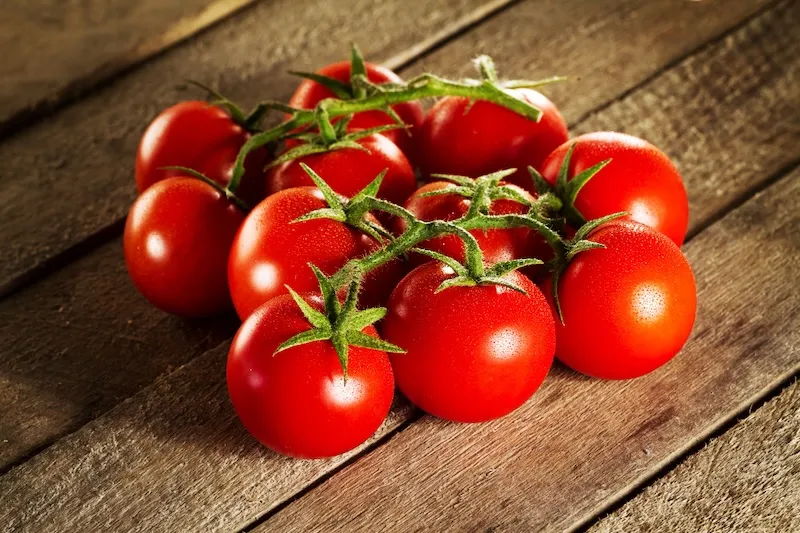
Cut and portioned, served plain is the best option.
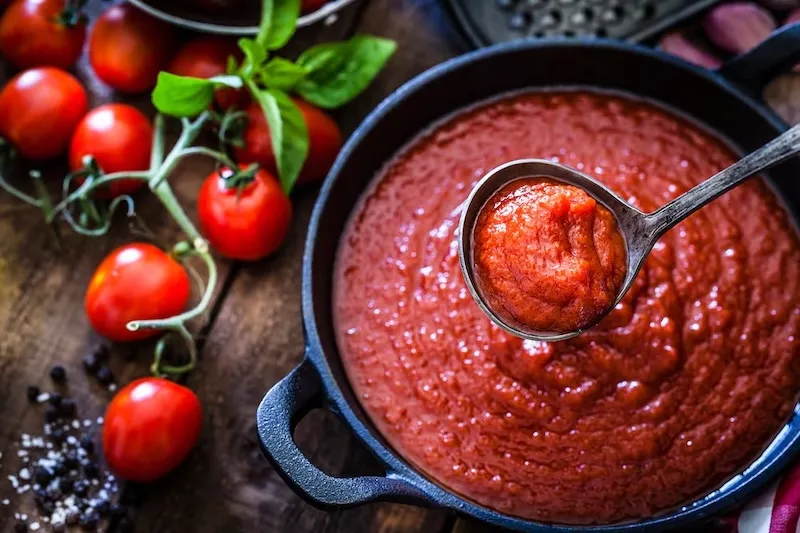
Lightly mash or blend ripe tomatoes to mix a small amount into your dogs regular food for a tasty boost.
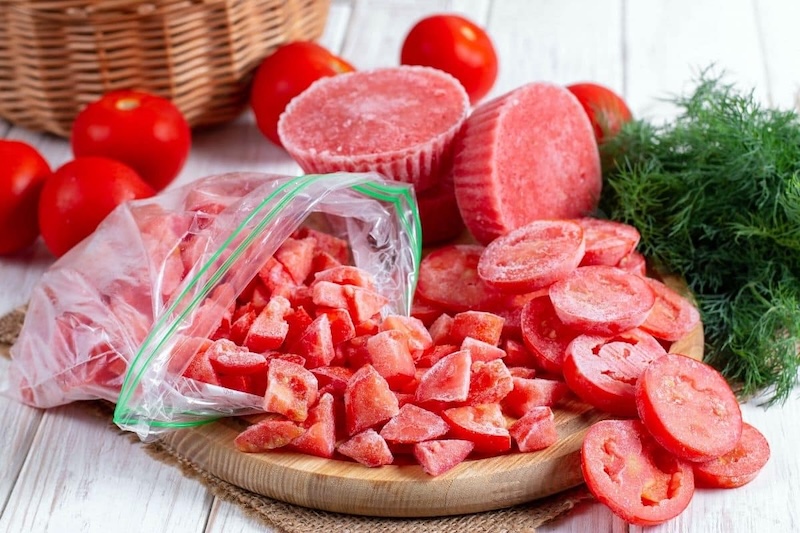
Chopped or blended with plain yoghurt or water and frozen as ice cubes for a cool summer snack.
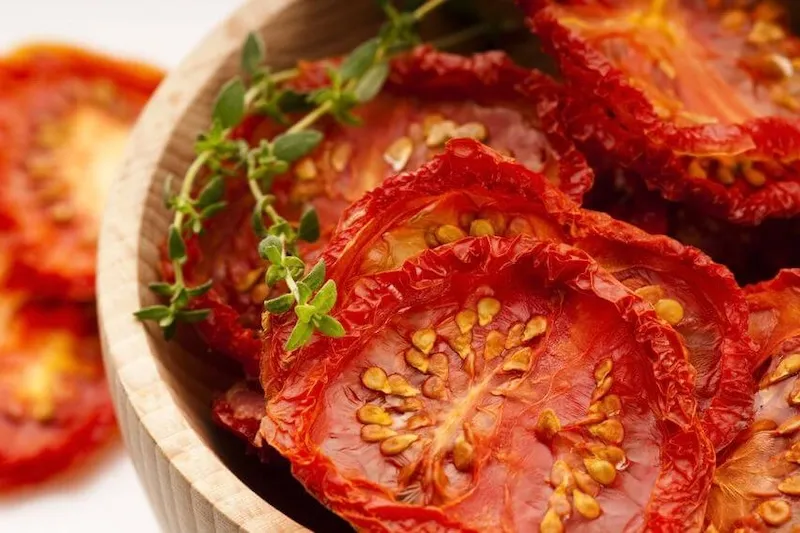
Thin, plain and unsalted slices of dehydrated tomatoes make for a chewy snack.
As long as it’s served fresh, plain and in moderate portions as treats, red ripe tomatoes make a nutritious treat for your pup!




